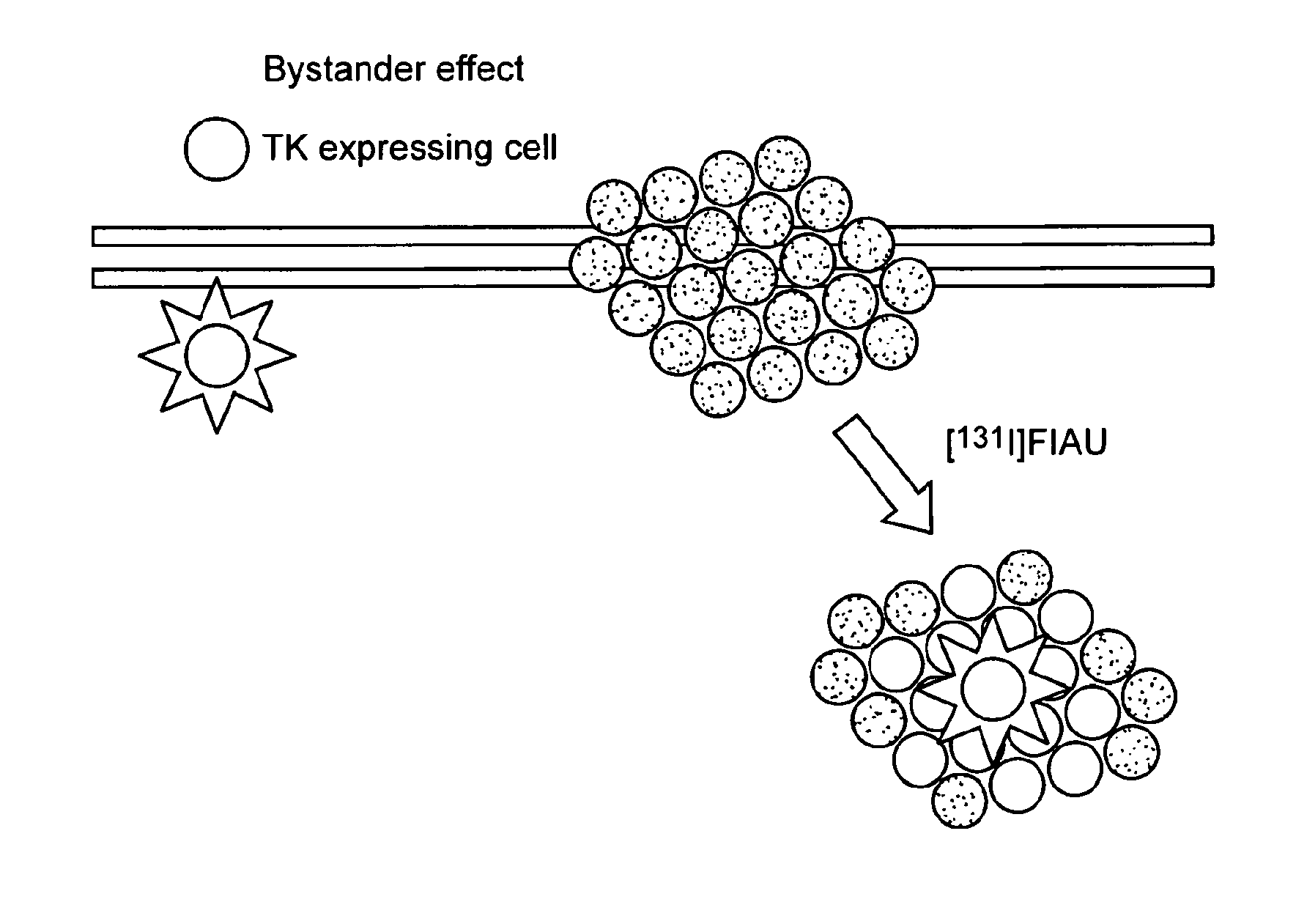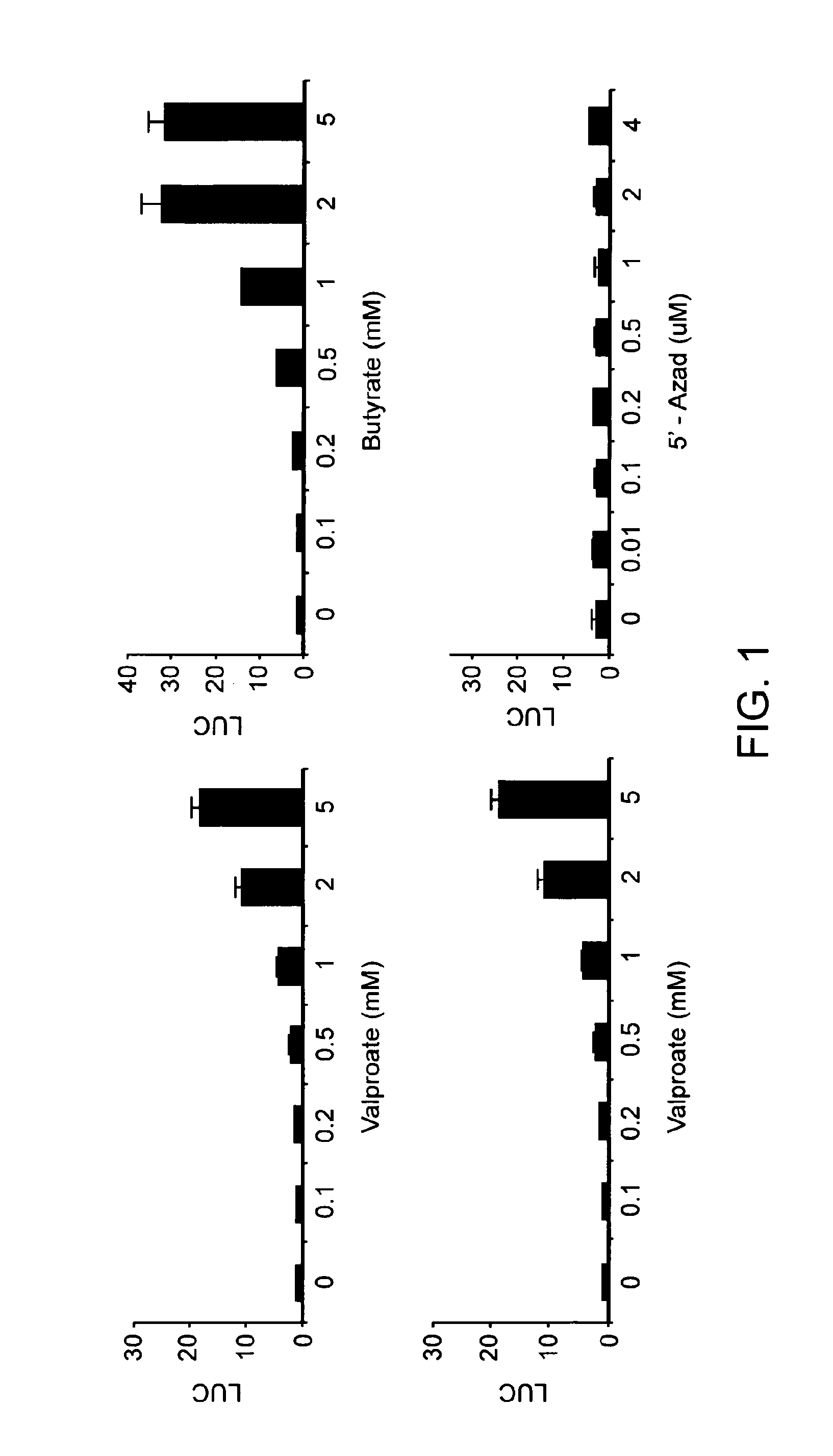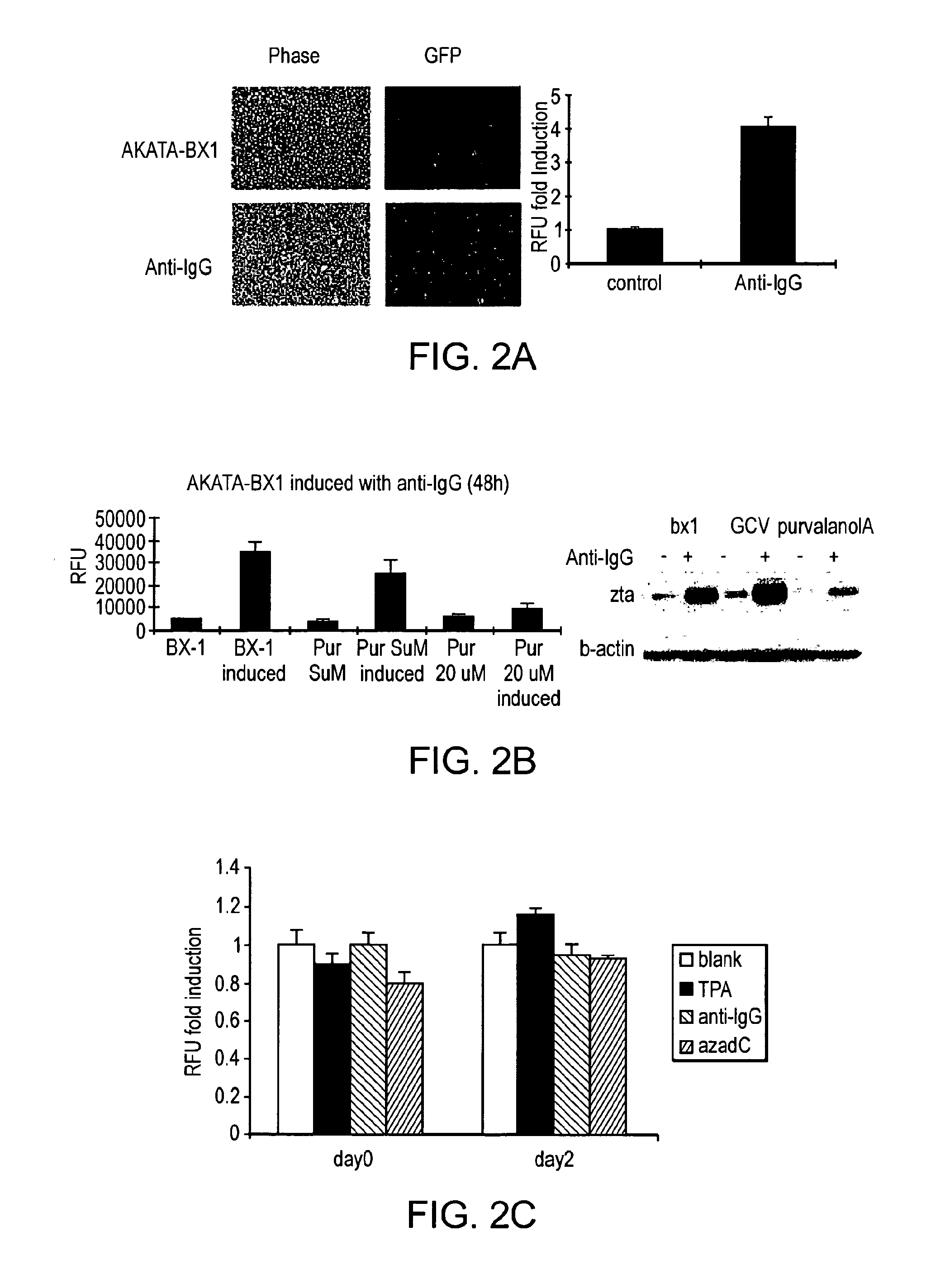Imaging and therapy of virus-associated tumors
a virus-associated tumor and tumor technology, applied in the field of imaging and therapy of virus-associated tumors, can solve the problems of urgent need for improved methods and inadequate diagnostic, monitoring and treating methods of virus-associated neoplasia, and achieve the effects of improving detection efficiency, increasing viral replication, and increasing the expression of viral polypeptides
- Summary
- Abstract
- Description
- Claims
- Application Information
AI Technical Summary
Benefits of technology
Problems solved by technology
Method used
Image
Examples
example 1
Luciferase Assay Identified Reagents that Activated the Zta Promoter
[0128]Zta is the key transactivator in the induction of EBV lytic infection. All reported lytic induction agents activate transcription of Zta. To identify drugs that induce immediate early gene expression in EBV, a Zta promoter luciferase reporter in a gastric carcinoma cell line background was assessed for its ability to detect known inducers of EBV lytic gene expression. In this promoter-epithelial cell assay, treatment with phorbol 12-tetradecanoate 13-acetate (TPA) and butyrate (TPA / butyrate) and valproic acid led to increased expression of luciferase in a dose-dependent manner as shown in FIG. 1, while 5′-azadeoxycytidine did not activate this promoter (FIG. 1).
[0129]The promoter-reporter system may not reflect regulation of Zta promoter in the context of the viral episome. The ZTA promoter-epithelial assay focuses upon a single well defined aspect of EBV replication with virus-free systems. EBV lytic infectio...
example 2
Development of a GFP-Virus-Based Assay to Identify EBV Lytic Induction Reagents
[0130]BX-1 is a recombinant EBV encoding GFP with the BXLF1 ORF disrupted, and AKATA-BX1 cells are Akata negative cells with this recombinant EBV. Microscopy showed that when EBV lytic infection was induced with Anti-IgG in AKATA-BX1 cells, the GFP signal would increase with lytic infection (FIG. 2A). Since GFP was encoded by an EBV recombinant virus, viral replication would produce more GFP and yield stronger fluorescence signal. This GFP signal was detected by a microplate reader. An increase in relative fluorescence units (RFU) was detected after lytic induction (FIG. 2A). The GFP signal was specifically inhibited by the S phase CDK inhibitor Purvalanol A, which is reported to inhibit EBV lytic induction [7] (FIG. 2B). To determine whether the GFP signal induction was due to CMV promoter activation or reflected lytic replication, a stable Hela cell line with CMV promoter driven GFP plasmid was used as ...
example 3
Drug Screen of a Clinical Compound Based Library
[0132]The Johns Hopkins Clinical Compound Library (JHCCL) consists of 2720 compounds, which were screened at a final concentration of 10 uM. The compounds were dissolved in DMSO or PBS, and formatted into 96-well plates. A typical readout of the GFP-whole virus assay is shown in FIG. 4. More than 200 compounds were identified as potential lytic induction drugs in one or both assays. Most agents identified as having activity could be grouped into 5 families: Proteasome inhibitors, anti-tubulin drugs, glucocorticoid and steroid hormones, nucleoside analogs, and anti-inflammatory drugs. Although many hits were in common, glucocorticoid activity was most frequently identified in the lymphoma cell line / whole virus assay, and antitubulin drugs were mostly often found in the epithelial-promoter reporter assay. Interestingly, many suppression hits are not drugs traditionally known as cytotoxic drugs. Among those hits, there are simvastatin and...
PUM
| Property | Measurement | Unit |
|---|---|---|
| time | aaaaa | aaaaa |
| radius | aaaaa | aaaaa |
| energy | aaaaa | aaaaa |
Abstract
Description
Claims
Application Information
 Login to View More
Login to View More - R&D
- Intellectual Property
- Life Sciences
- Materials
- Tech Scout
- Unparalleled Data Quality
- Higher Quality Content
- 60% Fewer Hallucinations
Browse by: Latest US Patents, China's latest patents, Technical Efficacy Thesaurus, Application Domain, Technology Topic, Popular Technical Reports.
© 2025 PatSnap. All rights reserved.Legal|Privacy policy|Modern Slavery Act Transparency Statement|Sitemap|About US| Contact US: help@patsnap.com



